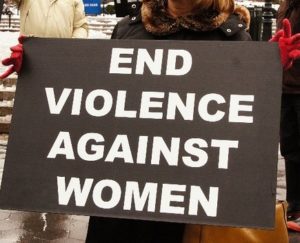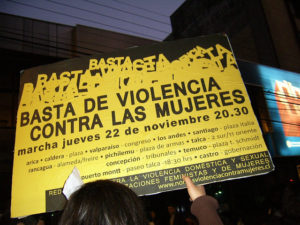 Today, 25 November, marks the International Day for the Elimination of Violence against Women. Considering the decades the international community has had to identify and working to resolving the problems of gender-based violence, why is it still such a prominent global problem in 2017? And how are women identified as rights-holders as individuals and as part of a uniquely vulnerable group?
Today, 25 November, marks the International Day for the Elimination of Violence against Women. Considering the decades the international community has had to identify and working to resolving the problems of gender-based violence, why is it still such a prominent global problem in 2017? And how are women identified as rights-holders as individuals and as part of a uniquely vulnerable group?
BACKGROUND
The international community has recognised the discrimination women face and the violence they are subjected to through a number of conventions, declarations, and international agreements. The 1979 UN Convention on the Elimination of All Forms of Discrimination against Women recognised that systematic violence against women was hindering the achievement of equality between the sexes, and that this had serious consequences for women’s abilities to realise their human rights. The Convention affirmed that individual women are rights holders in their own right – for example by affirming that women’s citizenship should be held by them and should not be dependent on the citizenship of their husbands. This Convention served as a reminder that women’s contributions to their societies are often not recognised and pointed out that the achievement of equality between the sexes would not be achieved in the absence of a re-evaluation of men and women’s traditional gender-based social roles.
The 1993 Declaration on the Elimination of Violence against Women, meanwhile, went further by identifying violence against women as a ‘social mechanism’ whose purpose was to keep women in a subordinate position vis-à-vis men. It recognised that ‘violence’ encompasses sexual and psychological harm as well as physical damage to women and that, around the world, gender-based violence takes place in domestic environments as well as the public sphere. The Declaration explicitly embedded violence against women in gender-based inequality, pointing out that violence against women is a particular manifestation of a long history of subjugation. The implication of this is that gender-based violence cannot be resolved simply by identifying acts of violence against women as criminal activities and prosecuting them alone: instead, each society needs to address the legal and cultural roots of gender based inequality wholesale. Gender-based violence cannot be fully addressed if it is addressed in a vacuum which does not take the wider socio-cultural context into account.
If gender-based violence is a manifestation of the historical treatment of women as an insubordinate group, is it useful to see women as a group whose rights should be specially protected in domestic and international law? This situation can be complex, especially as human rights as often seen as accorded to individuals instead of groups. Group rights have often been controversial among theorists who conceive of human rights as a doctrine to protect individuals from the power wielded by groups; for some thinkers group rights actually pose a threat to human rights as conferred to individuals. In addition to the tension between collective and individual human rights, the granting of collective rights to different groups can sometimes be contradictory; for example, where cultural or ethnic groups may hold the right to continue certain cultural or traditional practices, this can be in conflict with age or gender-based group rights held by some members of the group.
Are women’s rights and needs best served by understanding them as individual rights holders who can be protected through legislation which applies to all individuals (for example, criminal laws prohibiting assault), or should they be recognised as a group with a strong common identity, with specific vulnerabilities arising out of that identity, who should be protected by specific laws and, in some cases, elevated rights? When we identify women as a group with a common identity and common interests based on gender, it is also important to remember that, unlike some ethnic or cultural groups with defined rights, women are not a minority – protecting the rights of women ensures the protection of 50% of all humanity.
LEAVE NO ONE BEHIND
Adding further complexity to the idea of women as group rights holders, the Declaration on the Elimination of Violence against Women observes that women can belong to certain other groups which can exacerbate their vulnerability to violence; membership of some of these groups can cut across their gender identity and is shared with men (for example, minority and indigenous women or refugee women or age-related group membership).
The theme of 2017’s International Day for the Elimination of Violence against Women is ‘Leave No One Behind’ and is a reminder that ‘women’ are not simply a universal category facing identical experiences but that gender intersects with other social realities, including race, class/wealth, and sexual orientation, resulting in particular women being especially vulnerable, not just to violence, but to seeing their attackers treated with impunity. The campaign to eliminate violence against women also encompasses transgender and intersex women, highlighting the particular risks these women face, which may be heightened by cultural and legal barriers which prevent transgender women from securing legal recognition of their identity.
In the midst of these reminders that the vulnerabilities of groups are not uniform and that there are hierarchies of vulnerability within groups, it should not be forgotten that any woman can be subject to gender-based violence, and that violence against women is not merely the outcome of individual criminal behaviour, but is deeply embedded, and implicitly and explicitly coded as acceptable, across societies.
The Human Rights Consortium’s MA in Understanding and Securing Human Rights covers topics of contemporary relevance in human rights, including issues surrounding group and individual rights. The degree is now also offered by distance learning with the University of London’s International Programmes.


